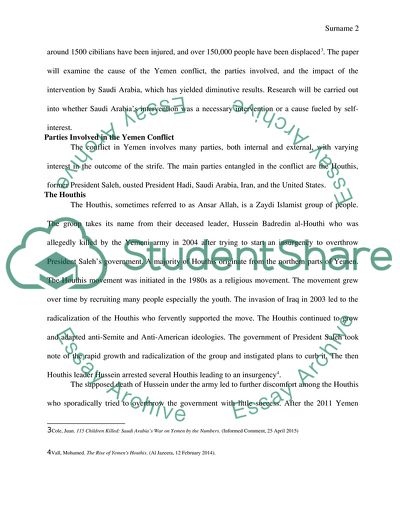Cite this document
(The Yemen Conflict and Saudi Arabias Intervention Coursework Example | Topics and Well Written Essays - 2250 words, n.d.)
The Yemen Conflict and Saudi Arabias Intervention Coursework Example | Topics and Well Written Essays - 2250 words. https://studentshare.org/politics/1880754-the-yemen-conflict-and-saudi-arabias-intervention
The Yemen Conflict and Saudi Arabias Intervention Coursework Example | Topics and Well Written Essays - 2250 words. https://studentshare.org/politics/1880754-the-yemen-conflict-and-saudi-arabias-intervention
(The Yemen Conflict and Saudi Arabias Intervention Coursework Example | Topics and Well Written Essays - 2250 Words)
The Yemen Conflict and Saudi Arabias Intervention Coursework Example | Topics and Well Written Essays - 2250 Words. https://studentshare.org/politics/1880754-the-yemen-conflict-and-saudi-arabias-intervention.
The Yemen Conflict and Saudi Arabias Intervention Coursework Example | Topics and Well Written Essays - 2250 Words. https://studentshare.org/politics/1880754-the-yemen-conflict-and-saudi-arabias-intervention.
“The Yemen Conflict and Saudi Arabias Intervention Coursework Example | Topics and Well Written Essays - 2250 Words”. https://studentshare.org/politics/1880754-the-yemen-conflict-and-saudi-arabias-intervention.


